Puma Punku is the name of a large complex of temples located near Tiwanaku
in Bolivia, Peru, and is part of a larger archaeological site known as Tiahuanacu.
The origin of these temples is a mystery, but based on the Archaeologists believe
that the complex may have been built by the Tiwanaku Empire - one of the
most important civilizations before the Inca Empire - that Flourished between
300 and 1000 AD.
The most intriguing thing about Puma Punku is the work of stone.
Puma Punku was a terraced mound of terraces originally faced with
megalithic blocks, each weighing several tens of tons.
The red sandstone and andesite stones were cut into geometric
shapes that fit perfectly with each other without using mortar.
The technical fineness and precision shown on these stone blocks
is astounding.
It's so precise that not even a razor blade can slide between
the rocks.
Some of these blocks, are finished with "machine" quality and
with holes drilled in a perfect way.
This was supposed to be performed by a civilization that had no writing
system and was even ignorant of the existence of the wheel.
Something does not fit.
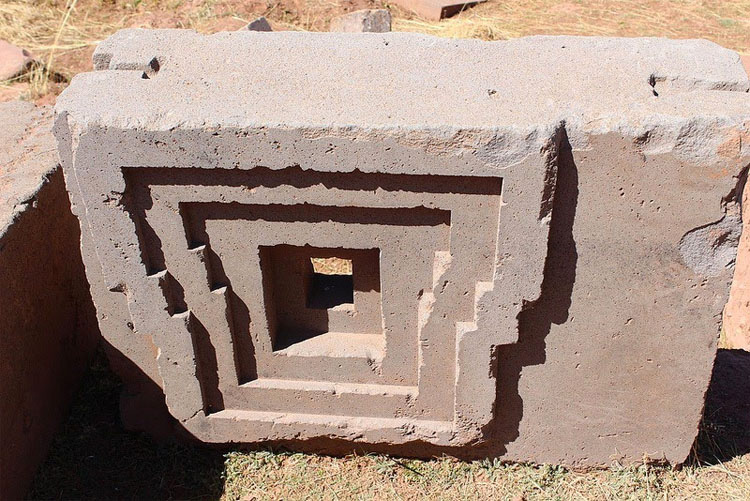
In assembling the walls of Puma Punku, each stone was finely Cut to intertwine with the
surrounding stones. The blocks fit like a puzzle. A common engineering technique is
to cut the top of the bottom stone with a certain angle, placing another stone on top
of it that was cut at the same angle. The precision with which these angles have been
used to create flush joints is indicative of a highly sophisticated knowledge of stone
cutting and a thorough knowledge of descriptive geometry.
Many of the joints are so precise that not even a razor blade fits
between the stones.
Much of the masonry is characterized by rectilinear blocks precisely cut from
such uniformity that could be exchanged for one another while maintaining
a flat surface.
The blocks were cut so precisely as to suggest the possibility of
prefabrication and mass production, with a technology that would
reach hundreds of years later.
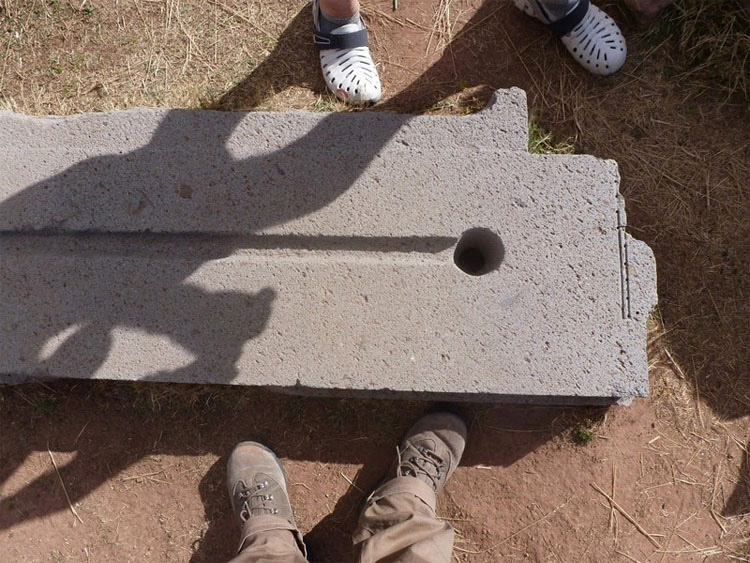
The stones are of the proportion of a mammoth. The largest of these blocks is 8 meters
long 5 meters wide and 1 meter thick, and is estimated to weigh about 131 tons. Because
of its size, the method by which Were transported to Puma Punku has been another topic
of interest since the discovery of the temple. The chemical analysis revealed that the blocks
of red sandstone were transported to a steep slope of a quarry near Lake Titicaca, which
is about 10 kilometers away.
The smallest andesite blocks were used for stone cladding and carvings and came
from quarries within the Copacabana peninsula about 90 kilometers away from
Lake Titicaca.
With a basis in circumstantial evidence, it can be argued that Puma Punku was never
built by the Tiwanaku, but by a civilization that was more advanced. Perhaps the results
of carbon dating are wrong due to contamination of the samples, or that Puma Punku
was built by another civilization that came across the ocean, built the complex
and left.
Some believe that Puma Punku could not have been built
without the help of extraterrestrial beings.
The complex today is in complete ruin, with huge blocks of granite
distributed over others.
The site appears to have been destroyed by an earthquake, which
was perhaps accompanied by a giant wave of Lake Titicaca.
An example of high precision are these small holes.
This block seems to draw the most attention, as there is a perfect slot
with 6 mm holes of identically spaced cut precision drilled along the cut.
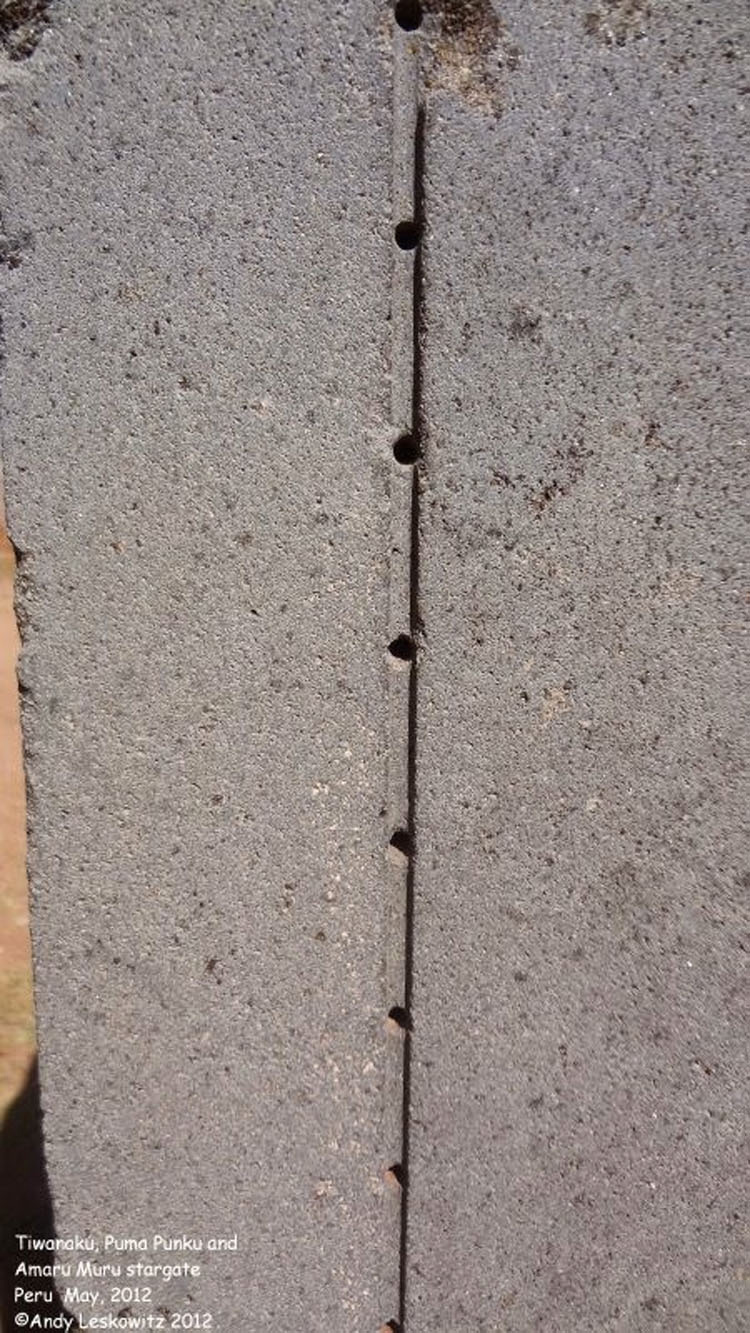
Still more drilled holes are visible with extraordinary detail.
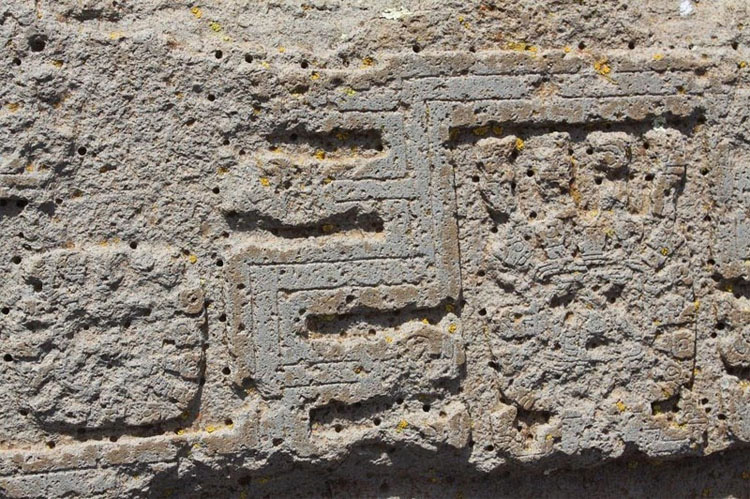
Blocks of stones with a complex of blind holes of complex form.
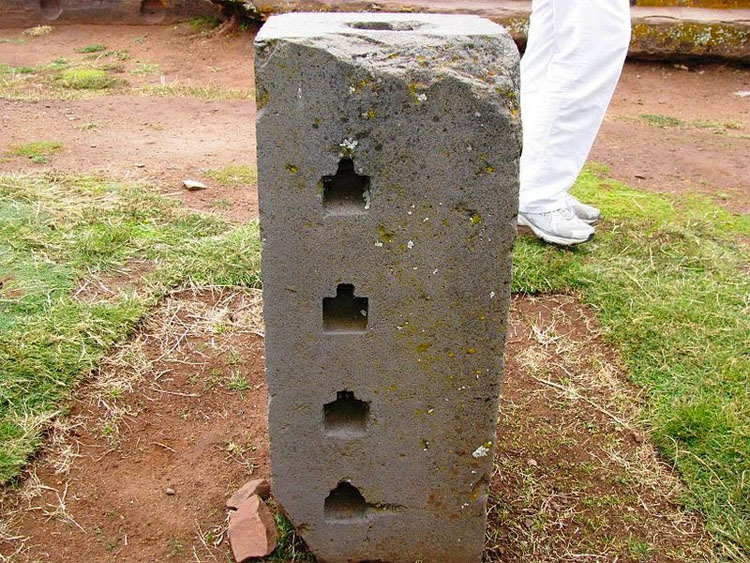
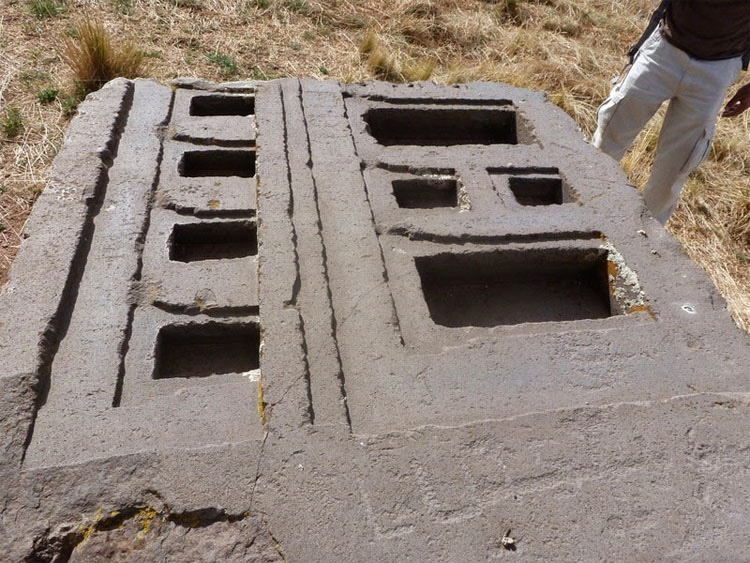
The numerous H-shaped blocks match each other with extreme precision
and fit intoone another as Lego blocks.
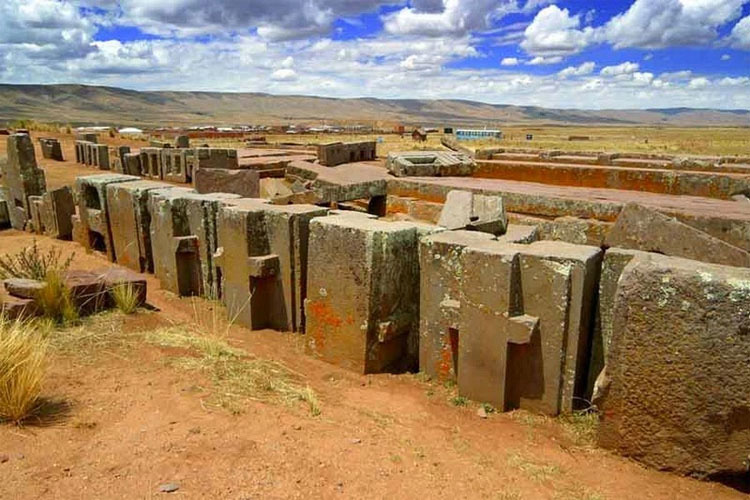
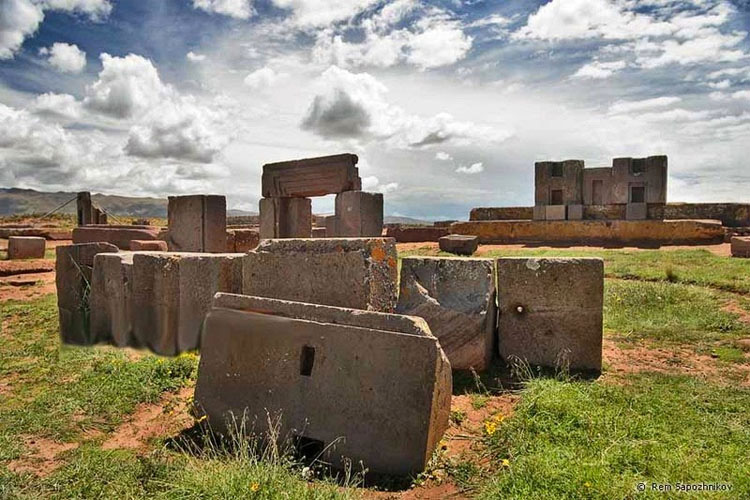
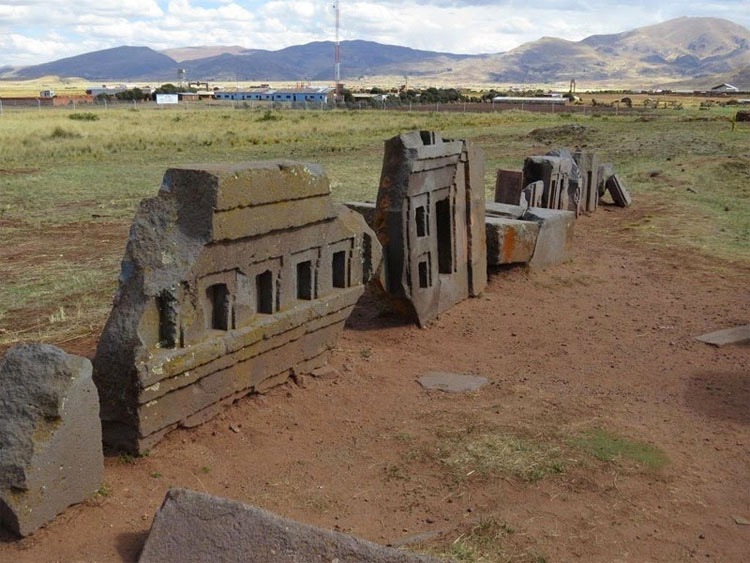
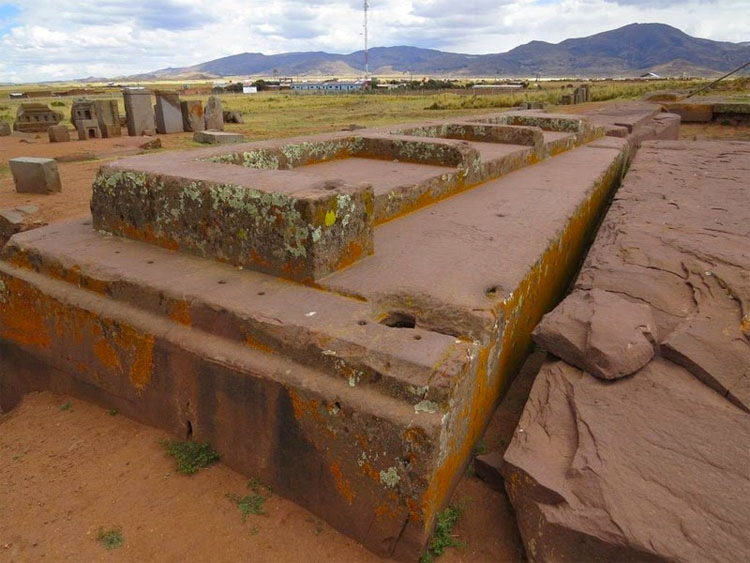
The Parthenon; With blocks of stones with magnetic properties, it took
1000 years before the ruins of Puma Punku, and yet no one says it
was made by the aliens.
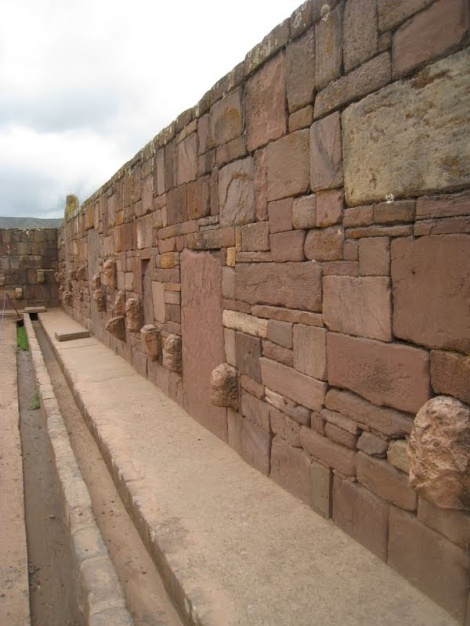
1000 years before the ruins of Puma Punku, and yet no one says it
was made by the aliens.

Sources: The History Channel | Andy Leskowit


